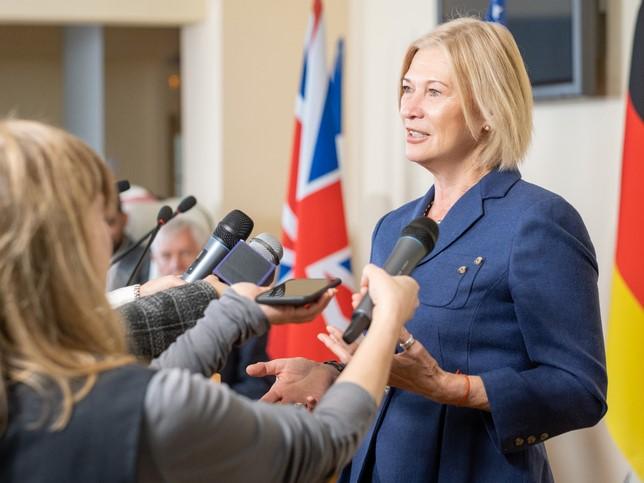
How to succeed at policy engagement, part two: mapping the landscape

In the first part of this series, I stressed the importance of having a goal; a clear aspiration that you are working towards. The goal could be that you want to get some guidance changed, influence a change in legislation or simply raise the profile of an issue. But you do need to start with a goal.
Now we are going to look at how you develop your knowledge and understanding of the policy space that you want to engage with. You will need to find out who holds the levers, who has influence and who is listened to.
Those of you who are involved with policy engagement will know that policy is a messy process. Some policies (for example, Covid lockdown) are decided in a matter of days. Others (for example, pension changes) can take years to evolve. And of course there are many stakeholders trying to influence policy on an ongoing basis, so it’s a crowded space. It is also a mistake to think that the Whitehall department in charge of a policy has a clear line of sight themselves. Often there are ministerial and departmental turf wars and arguments going on behind the scenes that make it a very multi-layered picture.
- How to succeed at policy engagement, part one: define your purpose
- Five steps for engaging policymakers with research
- It’s high time we rethought policy impact
Here is a rundown of areas to think about to help you build your map of the landscape and the stakeholders. This is where you need to turn detective and do some cyberstalking.
Let’s start with legislation and regulation:
− Are there existing laws, regulations or official guidelines pertaining to your area?
− Is the policy/legislation devolved to Wales/Scotland/Northern Ireland or retained at Westminster?
− Is there a regionally devolved aspect to the policy (eg, does it sit within mayoral control)?
Then let’s move to the government:
− Which government department/agency/regulator is in charge?
− Which minister has responsibility?
− What is the stated government policy and have any commitments been made to review it?
− Have you read the relevant government strategy for this topic?
− Are there any recent consultation documents issued by government dealing with this subject?
− Has this area been cited in the latest “Areas of Research Interest” document published by government?
− What is being said in the recent ministerial/senior official/regulator speeches?
− Who (local authority/NHS Trust/government agency) actually has the implementation responsibility?
And now over to Parliament:
− Is the relevant Commons/Lords select committee considering this issue?
− Is there an All-Party Parliamentary Group (APPG) looking at your topic, and which MPs/peers have joined this group? Do they have events coming up?
− Which organisation is convening/sponsoring the APPG?
− Who has raised this issue on the floor of the Commons or Lords chambers during debates or posed questions to the government?
− What are the opposition saying?
− Has your local MP been involved with the issue at any point?
− Which MPs/peers were engaged with this topic when the most recent bill was in committee?
− Has a bill (draft legislation) been scheduled for this parliamentary session?
Who else is trying to effect this change?
− Which groups/charities are campaigning in this space?
− Who else is lobbying in this area (business/health bodies/safety groups)?
− What about professional bodies (the Royal College of GPs, for example)?
− Who is speaking on this issue at conferences and how much influence might they have with policymakers and ministers?
− Which journalists are showing a keen interest?
− Who are the knowledgeable voices on social media who are attracting attention in this area?
This list may seem long and daunting, but an hour of googling should give you a good start. The reality is that you won’t generally have face-to-face access to the actual civil servants who are working on the policy, but you may be able to get to know the people that they trust – and therefore slowly be brought into that circle of trust yourself.
Whether you want to engage with a policy team or a relevant stakeholder from outside government, finding someone you know who can introduce you to that organisation/individual is ideal. You can do this through researching on LinkedIn who in your network is connected to the person you want to reach. Your mutual colleague then affords you some trust with the person that you are trying to contact. Yes, there’s some creativity and time investment required, but that is the name of the game.
I recently tried to contact an organisation that I wanted to work with by messaging a couple of the team on LinkedIn, but it didn’t lead anywhere. So I found someone in my network who knew the CEO of the organisation concerned, and he did an introduction for me. The CEO and I had a good conversation; I’ve now met some of the wider team, and we are discussing working together.
You are going to have to be proactive and focused in your interactions in order to build your network and understand the landscape. But it can have huge rewards. One of the academics I work with is now running her own webinar series focusing on her policy area and has had a number of lords and MPs speaking at her events. She has cleverly built her network, finding academic, government and parliamentary stakeholders who share her interests and concerns and is building positive relationships with them.
So, those are my pointers on mapping your policy landscape. In the first piece in this series, we focused on identifying your “purpose” in terms of what you are trying to achieve through engaging with policy. Having clarity of purpose informs which areas of the public sector you will need to engage with, and then “mapping the policy landscape” enables you to become clearer on which individuals and organisations you really want to target. In our third and final piece on policy engagement, I will describe how to build lasting relationships with those relevant stakeholders and how to build a coalition of the willing to effect policy change.
Jo Clift worked at the heart of the UK government for more than 20 years and now works with academics who want to engage with, and influence, policy. She has worked with a number of UK universities including Imperial College London, Goldsmiths, University of London and the University of Plymouth.
If you found this interesting and want advice and insight from academics and university staff delivered direct to your inbox each week, sign up for the Campus newsletter.


